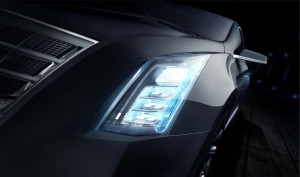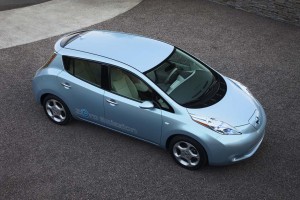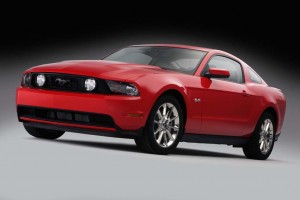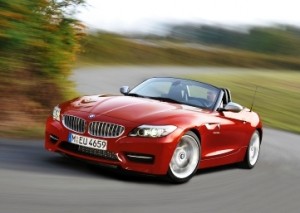
Though media days have been cut back this year, expect some big news from the 2010 NAIAS, including the debut of Cadillac's new XTS flagship sedan.
Auto shows were already well established by the time Henry Ford rolled out his first Model T, more than a century ago, and the formula hadn’t changed much by the time the small, regional Detroit Auto Show morphed into the influential North American International Auto Show, two decades ago.
Arguably the world’s most important automotive event, the NAIAS typically draws more than 600,000 paying customers – along with as many as 5,000 members of the media, there to watch the unveiling of dozens of cars, trucks, crossovers and concept vehicles.
But in an era of tight budgets – never mind the ubiquitous influence of the Internet – the auto show concept is facing some serious challenges. One of the first things General Motors Chairman Ed Whitacre says he asked his staff, after assuming the additional post of Acting CEO, is, “Does the auto show sell cars?”
That’s long been a matter of debate, though the Detroit Auto Dealers Association, which sponsors the NAIAS, is quick to produce reams of data underscoring the annual event’s influence. (And you’ll hear similar stories from sponsors of other events.)
Nonetheless, “The auto show business,” says DADA chief Rod Alberts, “is no different from any other, and there’s a bit of reinventing to be done.”
The NAIAS began that process last year by turning a lemon into lemonade. Faced with a worsening economy, a number of automakers, including Nissan, Mitsubishi, Land Rover and Suzuki, had pulled out of the 2009 Detroit Auto Show. That left plenty of normally desirable space on the floor of Cobo Hall potentially empty.
But show organizers found an alternative use for the sprawling convention center’s lower floor. They transformed it into the EcoXperience, which gave show-goers the chance to actually drive some of the newest hybrids and other alternative-power models. That’s a big shift from the traditional auto show approach, with its static displays.
The emphasis on “green” is coloring most major auto shows, from Beijing to Frankfurt to Los Angeles. But the NAIAS will not only double the size of EcoXperience this year, but add another distinctive environ-friendly element, this year, with the debut of Electric Avenue. A 25,000 square-foot chunk of Cobo’s main floor – once occupied by the various brands that General Motors is dropping – will serve as display space for the latest in battery vehicles and electric propulsion technology.

Nissan will make a limited return to the Detroit Auto Show with its Leaf battery car appearing on Electric Avenue.
Significantly, Electric Avenue will provide an opportunity for an array of small start-ups and imports that normally wouldn’t have the financial resources to participate in one of the world’s largest auto shows – where even a modest display normally costs well in excess of $1 million.
The project even brings Nissan back to the NAIAS. The Japanese maker won’t have its traditional, large display, but will set up a small booth on Electric Avenue to show off its new Leaf battery-electric vehicle, or BEV.
“It’s a very different world. Everyone has to live within a budget. I don’t think we’ll see any cattle drives for awhile,” says Detroit show chairman Doug Fox, referring to an event Chrysler used, two years ago, to promote the launch of the Dodge Ram pickup.
Chrysler arguably created the modern auto show – and the Detroit Auto Show, in particular – when it began staging a series of wild, wacky and not always successful product debuts.
At the first NAIAS, Chrysler’s then-President Bob Lutz drove the all-new Jeep Grand Cherokee up the long steps of Cobo Hall and through the center’s plate glass window. At another show, a new minivan was tossed over the head of former Chrysler CEO Bob Eaton. And then there was the cattle drive, which generated more coverage than the maker might have wanted, of the amorous behavior of the longhorns parading down Washington Boulevard.
Surprisingly, the “new,” post-bankruptcy Chrysler won’t stage any news conference at the 2010 NAIAS, though it will have a display. A number of other makers, including Nissan’s luxury brand, Infiniti, will be absent entirely.
The press conference schedule underscores the cutbacks. Though a final number is in flux, there’ll likely be less than 30 news conferences and they’ll barely fill two days, rather than the traditional 3-day media calendar.
That said, there will still be some significant “reveals” likely to retain the NAIAS’s reputation as the biggest and most important auto show in the U.S., and one of the globe’s Top 5. While some makers are still playing hard-to-get, others have announced their plans, and at this point, TheDetroitBureau.com has confirmed these among other previews at the 2010 NAIAS:
- The 2011 Ford Mustang;
- The global Ford Focus;
- Two Cadillacs: the XTS premium luxury sedan concept; and
- The high-performance Caddy CTSv Coupe;
- The Buick Regal GS concept;
- A new concept vehicle from GMC and the Acadia Denali;
- Audi’s new A8;
- BMW’s ActiveE and Z4 sDrive35;
- Chevrolet Aveo, Spark, Orlando, Malibu; and
- The Camaro Convertible;
- The Mini Beachcomber concept;
- Mercedes’ E-Class Cabriolet;
- Volvo C30 Electric;
- Volkswagen Jetta;
- Toyota Hybrid Concept.
In all, there’ll likely be close to 50 vehicles making their global, or at least North American, debut at the 2010 NAIAS. That may be down from more than 70 at the show’s peak, but it’s still a significant turn-out. And with the addition of Electric Avenue and the EcoXperience, the Detroit Auto Show should still generate plenty of buzz.


